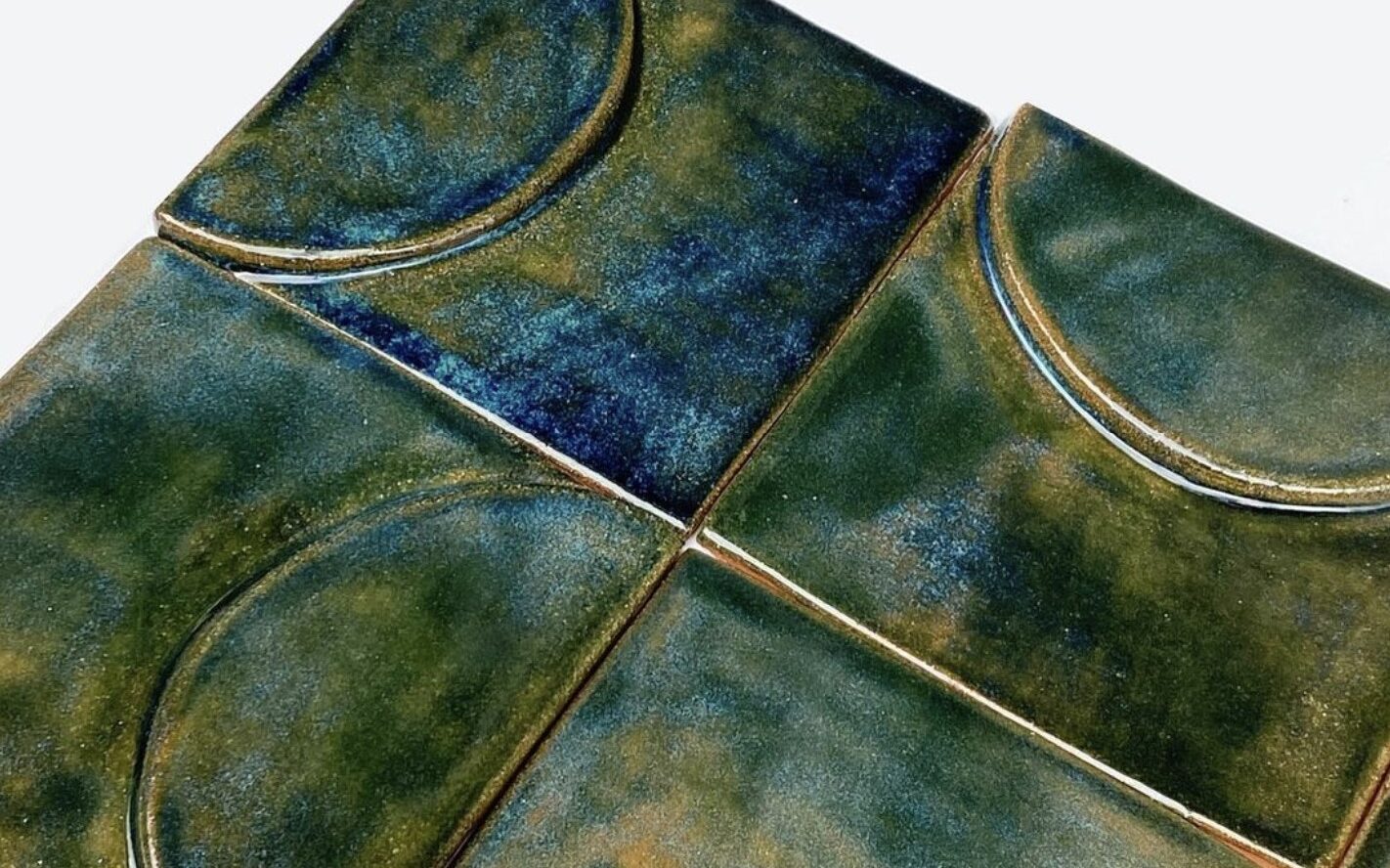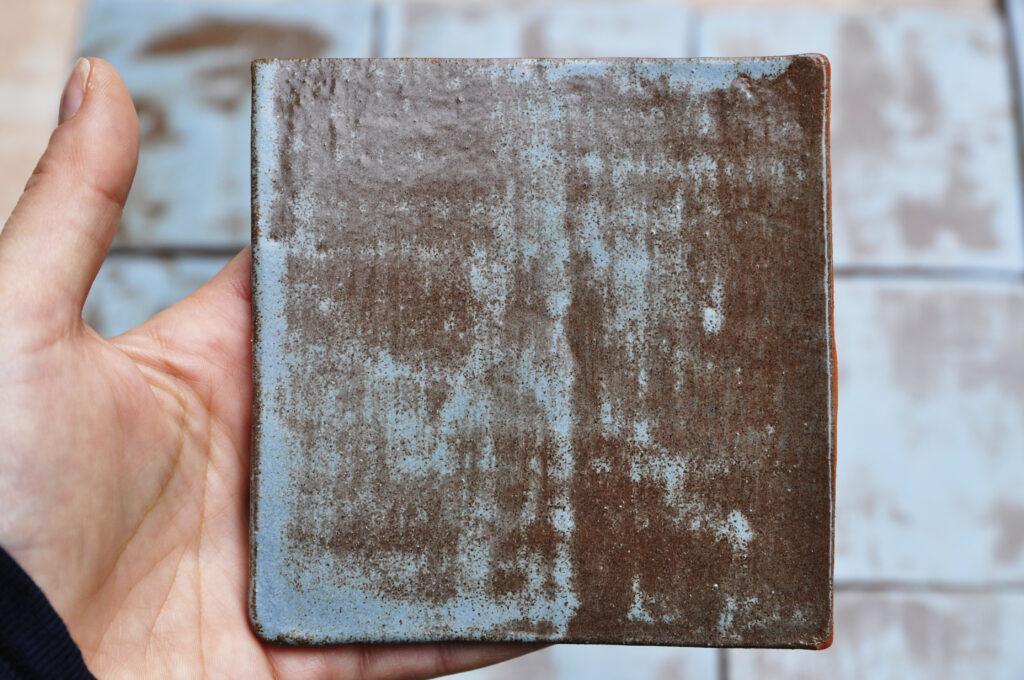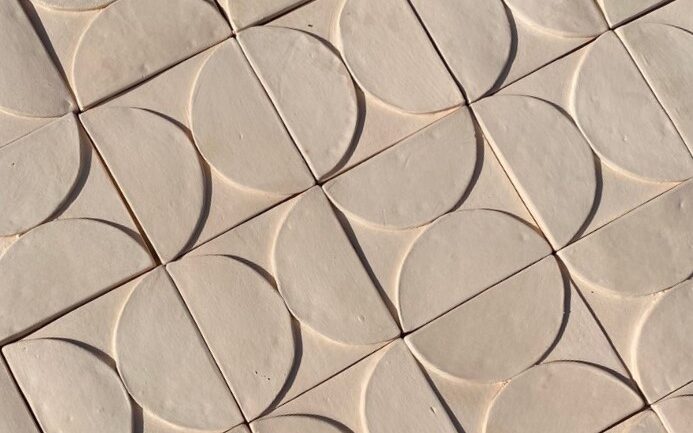Two & A Half Dimensions is an artisan tile-making studio based in Naples, Italy. We are dedicated to the craft of handmade ceramics, and it is our job to understand the beauty that lies in the art of handcrafted tiles.
These locally produced works of art are cherished for their unique variations in colour, shape, size, surface undulation, and even bowing, which set them apart from their mass-produced counterparts. In this article, we’ll delve into the world of handcrafted tiles and explore the artistry behind these variations, revealing why they are celebrated and embraced by those who appreciate the human touch in design.
Variations in Colour

Handcrafted tiles from Two & A Half Dimensions are crafted using traditional methods and natural materials, and due to this our tiles exhibit a diversity of hues within the same tile batch.
Why is there colour variation in handmade tiles?
- 1.- Glaze Preparation
- 2.- Brushwork
- 3.- Layering
- 4.- Firing
Read more on our guide on Why do Handpainted Tiles Have Variation?
How do I install handmade tiles with colour variation?
Consider these differences and plan accordingly by laying the tiles out in advance to ensure the variation is distributed equally.
Variations in Shape and Size

Our handcrafted tiles are celebrated for their organic and irregular shapes. These variations are a testament to the artisan’s touch, emphasizing that each tile is crafted with care and individual attention. They break away from the uniformity of machine-made tiles, infusing spaces with character and personality.
How do I install handmade tiles with variation in size and shape?
Assembling tiles before laying is highly recommended. This will help ensure that your measurements are correct and adjusted according to the variations in size and appearance that come with handmade tiles. You will need to rotate tiles to accommodate for individual differences. Do not use spacers as these will only emphasise differences. Please see our Installation, Care and Maintenance guides.
Surface Irregularities

Surface irregularities in the tile’s surface, is another characteristic of Two & A Half Dimensions handcrafted tiles. These marks are a result of the handcrafting process and give each tile a unique, tactile quality. Sometimes you may even see the soft impression of an artisans finger.
Will surface affect my installation?
The surface undulation of our handcrafted tiles adds depth and texture to spaces. When touched, these tiles evoke a sensory experience, allowing individuals to connect with the tactile aspects of design. However they do not affect the final installation process.
Undulation and Bowing in Handmade Tiles

One of the challenges often encountered with handmade tiles is undulation, also known as bowing, where the tiles have a slight curve or warp. This occurs due to the natural drying process during production as well as the plastic nature of clayand can vary from tile to tile.The bowing
will always be within acceptable parameters and will not compromise the integrity of the tile. For this reason we always recommend you hire an experienced tiler with an understanding of handmade tiles.
A sign of Authenticity:
While bowing might be seen as a flaw in machine-made tiles, it adds to the authenticity of Two & A Half Dimensions handmade tiles. These subtle imperfections remind us of the human touch that goes into their creation and contribute to their unique character.
Installation Techniques:
Irregularities across the surface are common, and tiles may not always be perfectly flat. However they will always be able to adhere to a surface securely when done by a professional who will set them on adhesive in order to give them a firm bed.You may need to slightly build up the adhesive to accommodate for differences. Once again, rotating and laying tiles out in advance will ensure that your measurements are correct and adjusted according to the variations in size and appearance that come with handmade tiles.
Grouting Handmade Tiles

Grouting is the final step in the installation of Two & A Half Dimensions handcrafted tiles, and it’s a critical stage where variations in colour, shape, size, surface undulation, and bowing are integrated into the overall design.
Choosing Grout:
Selecting the right grout colour is essential when working with Two & A Half Dimensions handcrafted tiles. Grout can either blend in with the tiles, creating a harmonious look, or contrast with them, highlighting their variations and enhancing their unique beauty.
Grouting Techniques:
Our tiles are often laid with minimal grouting to enhance the visual effect. We recommend that corners of tiles touch and grouting be left to fill the irregular spaces between.
Always involve your tiler in these conversations as they may have specific techniques they feel comfortable using. Please ensure that you consider the 3D nature of the tiles and how that might impact the final appearance. Grout sealant is recommended after installation.
We recommend Mapei wide joint grout, as they offer a wide selection of colours. Excessive grout must be cleaned off tiles with a wet sponge immediately after installation.

Handcrafted, handmade, artisan, and locally produced tiles from Two & A Half Dimensions are treasured for their unique variations in colour, shape, size, surface undulation, and even bowing. These variations are not flaws but rather the hallmark of authenticity and the human touch that sets our tiles apart. Embracing these imperfections can result in captivating, personalized designs that resonate with the warmth and character of our handcrafted tiles.
To further explore how to install Two & A Half Dimensions handmade tiles according to these variations, please read our comprehensive Installation, Care and Maintenance guide. You can also visit Choosing Your Tiles to gain a deeper understanding of the stability and potential variation of our glazes, as well as view pictures of multiple batches on our Gallery.
